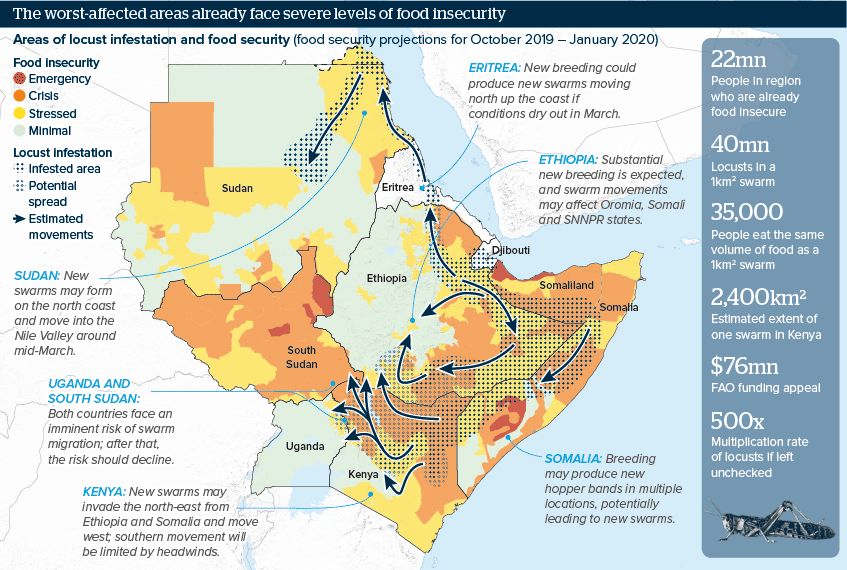Locusts threaten fragile East Africa food security
The worst locust infestation in decades comes atop successive years of droughts and floods
Source: Food and Agriculture Organization; FEWSNET; UNOCHA
Outlook
A massive locust infestation has hit the Horn of Africa just as experts were predicting a mild improvement in the chronic food crisis the region has been facing, after successive cycles of drought and flood left 22 million people severely food insecure across the region.
Ethiopia, Kenya and Somalia are the worst-affected areas, while Sudan, South Sudan and Uganda all face a risk of further infestation. Breeding conditions are expected to remain favourable until June and UN experts warn the infestation could become 500 times worse without prompt and effective control measures. Eradication efforts are underway but existing resources are severely stretched.
Impacts
- Early harvests mean Kenya and Somalia have avoided some near-term effects, but grazing lands and later production remain under threat.
- March-April may bring optimal climatic conditions for breeding, and resultant swarms could then impact one of the main production seasons.
- The economic impacts could be significant in a region that typically relies heavily on agriculture as a percentage of GDP.
- Heavy rains in late 2019 created the conditions for the infestation; fears will grow that climate change may bring more such events.
See also
- COVID-19 global climate impact may be brief - Mar 27, 2020
- East Africa locust control will require coordination - Feb 24, 2020
- East Africa locust infestation may worsen - Feb 19, 2020
- Vulnerability deepens East African food crisis risks - Apr 9, 2019
- More graphic analysis
